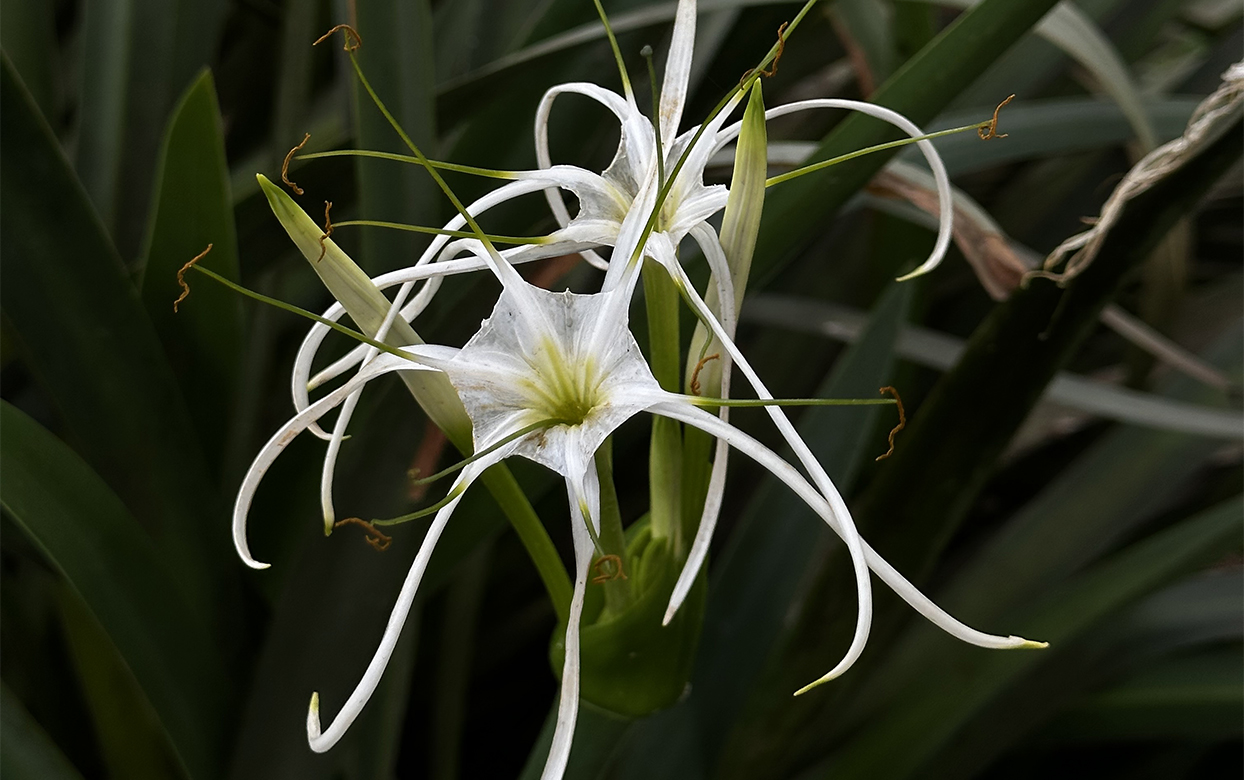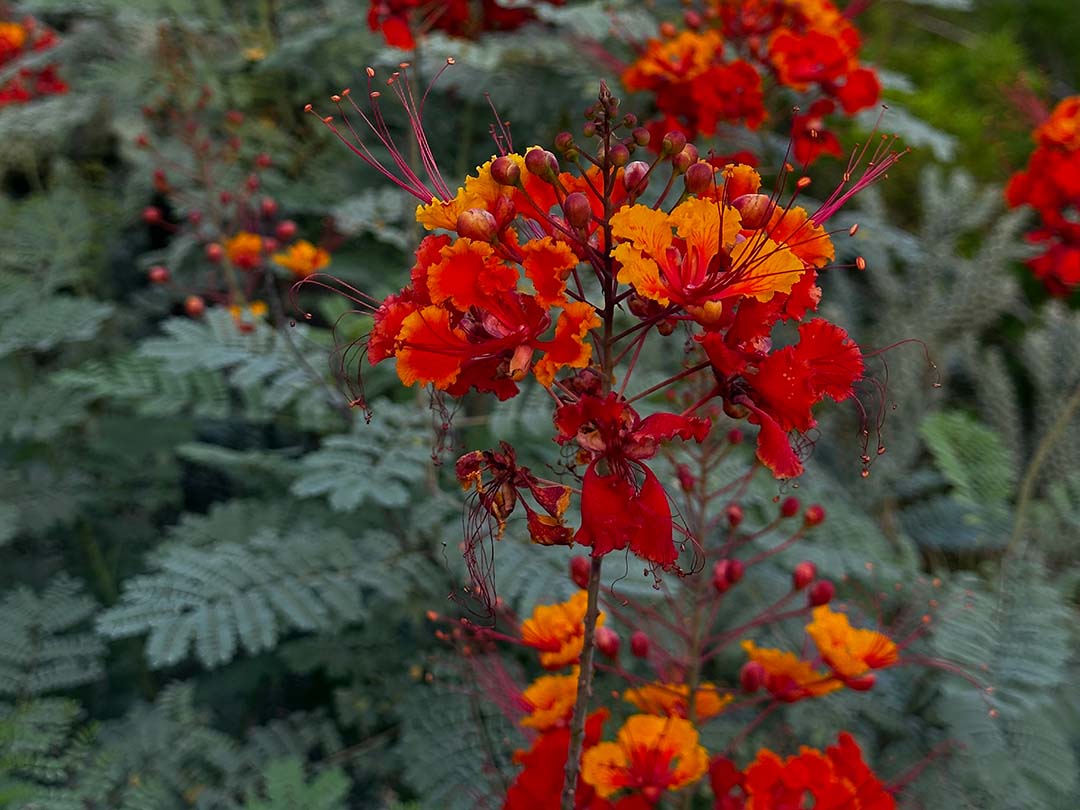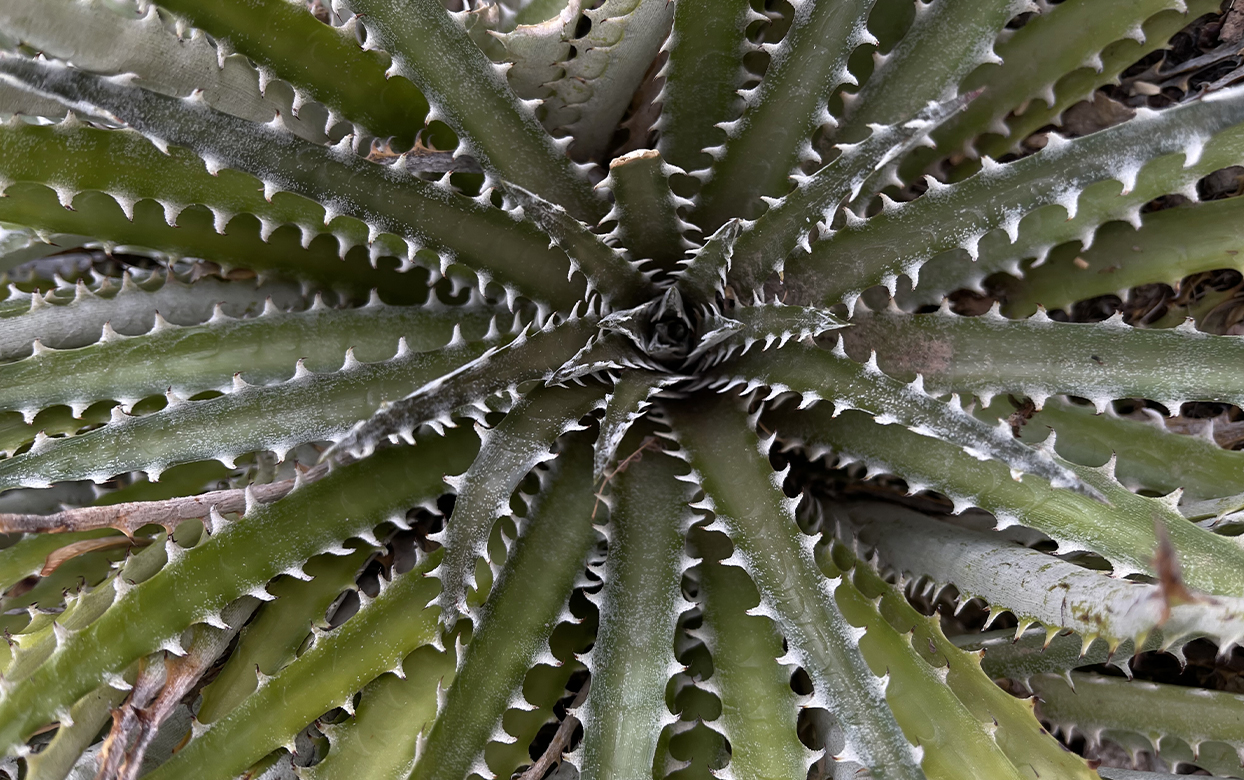Desert Botanical Garden is celebrating Hispanic Heritage Month by highlighting a few desert plants in its collection.
Apart from agaves and cactus, the Garden has many desert plants native to Latin American countries. Mexico alone has a rich diversity of agaves and cactus. From agave look-alikes to bright summer bloomers, arid-adapted plants are a wonder in many Latin American countries. Learn more about them below.

Carapari (Neoraimondia herzogiana)
Endemic to the plains and river valleys of Bolivia, Neoraimondia herzogiana is a tree-like cactus with small bright pink flowers. These plants are commonly known as Carapari and baseball bat cactus — the latter name in reference to the shape of its stem, which is skinny near the base and bigger near the top. This cactus can grow up to 40 feet in height. Guests can find these cactus on the pathway heading into the Desert Portal.

Golden Barrel Cactus (Kroenleinia grusonii)
No other cactus is more ubiquitous in desert landscapes and garden designs in Mexico, the U.S. Southwest and across Latin America than Kroenleinia grusonii. With a stunning rotund stem and sharp, long yellow spines, the cactus is famously known as the golden barrel. Yet, as common as it is, the golden barrel is endangered. The cactus’, native to Central Mexico, population has declined over the years due to illegal collection and due to habitat loss from the construction of dams in the 1990s.

Sonoran Spider Lily (Hymenocallis sonorensis)
Though not officially part of the Garden’s plant collection, Hymenocallis sonorensis puts on a show most summers with its white, spider-like flowers in the shade garden at the Wildflower trail. The Sonoran spider lily, native to the eponymous northern Mexican state, has large green, sword-shaped leaves and produces white flowers that open in the early morning. This plant can be found along streams and boggy areas in Sonora.

Bird of Paradise/ Barbados Pride (Caesalpinia pulcherrima)
Part of the pea plant family, Caesalpinia pulcherrima is a showy summer bloomer. It is unknown the precise location, but the bird of paradise likely originated in the West Indies or Mexico. This shrubby, multi-stemmed plant produces bright orange and yellow petals, as well as long red stamens. Throughout the Garden, guests are bound to find a bird of paradise in almost all five trails.

Dyckia spp.
Dyckia is a genus of plants in the bromeliad family, whose most famous member is the pineapple. Often mistaken for agaves or aloes, Dyckia species have narrow, serated leaves and a rosette shape, adding to its arid plant characteristics. Unlike agaves, Dyckias flower more than once in their lifetime, sending up a flower stalk with typically small red, yellow or orange flowers. After flowering, these plants produce pups, or offsets, from the mother plant. Most Dyckia plants are native to Brazil. These plants don’t store water in their leaves, rather they go dormant. Guests can find Dyckias by the Desert Portal and at the Succulent Gallery.
